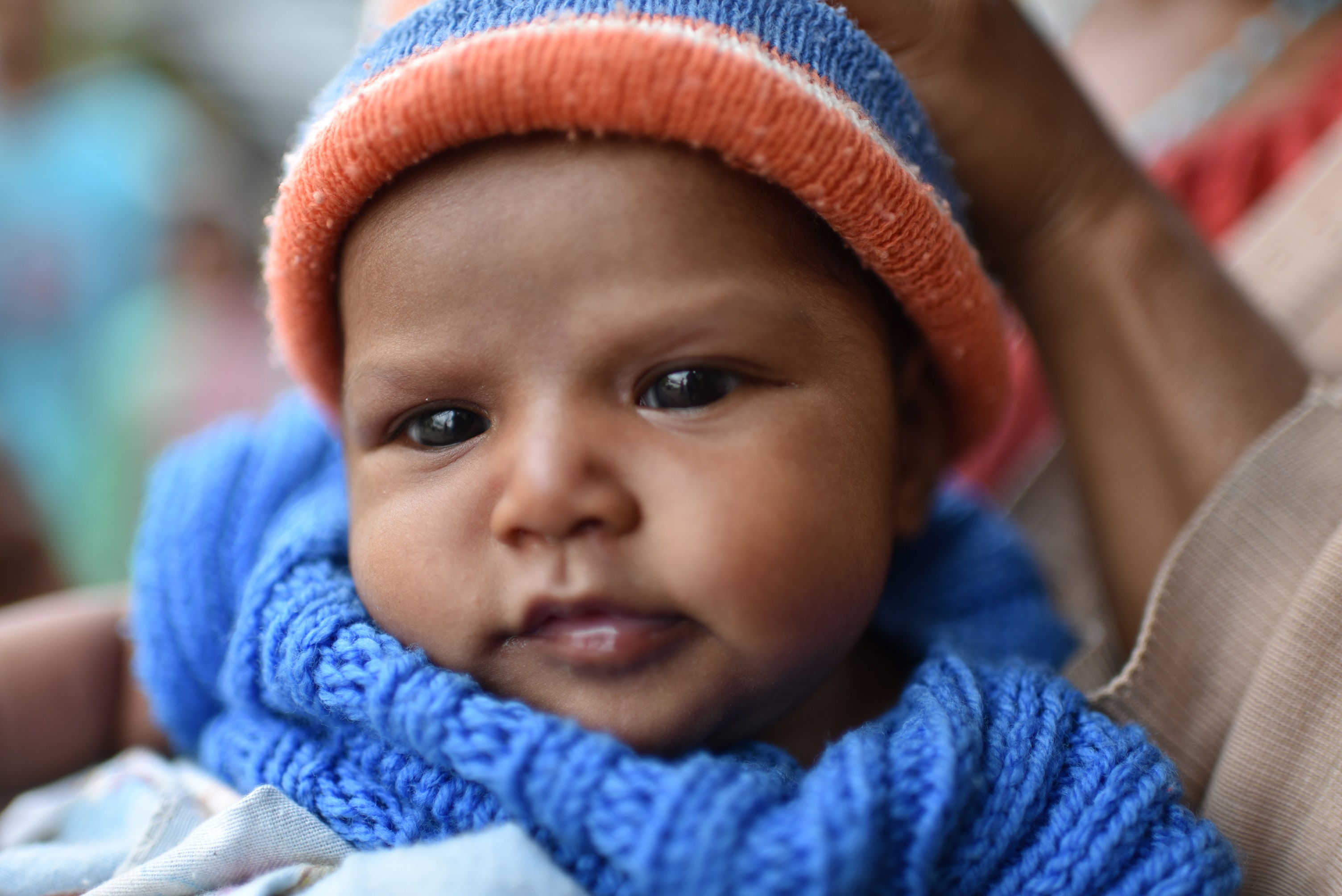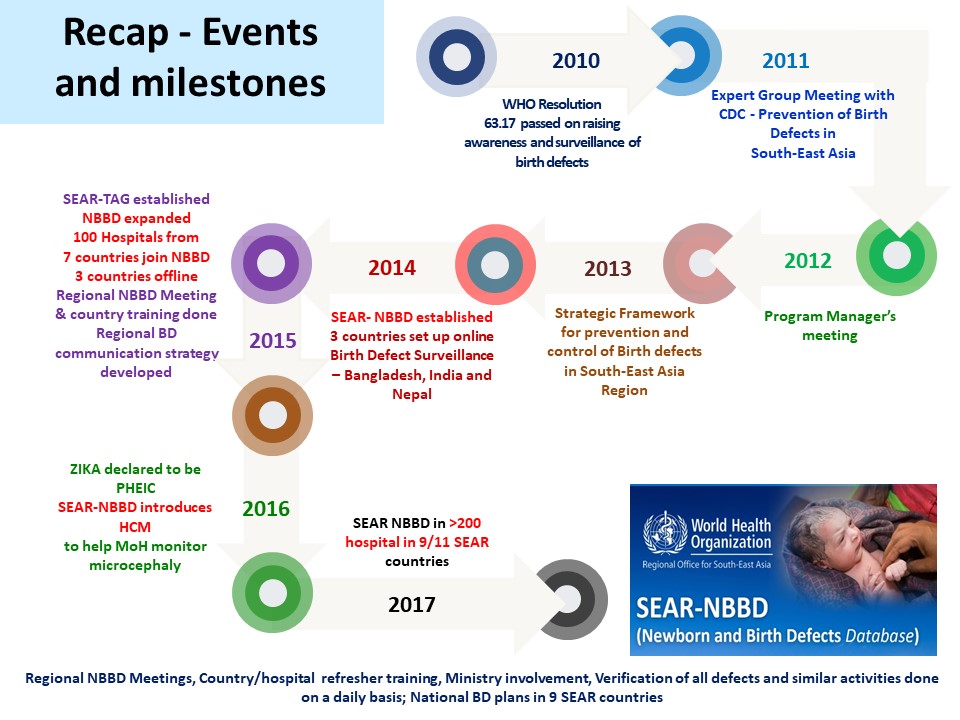New Delhi, 4 March 2022: Birth defects are structural and functional anomalies that occur during intrauterine life of a fetus. The most common ones are heart defects, neural tube defects, Down’s syndrome disease. Birth defects may result in still births, or deaths within few hours of birth, or within days or years. Those who survive, do so with life-long disabilities and challenges, causing untold miseries to individuals as well as their families.

Photo Credits: WHO Timor-Leste/Shobhan Singh
To address this, WHO and Member countries of South-East Asia Region are intensifying efforts to prevent birth defects, to identify them early, and provide timely treatment to cure and care.
“Most birth defects can be prevented through primary and public health measures with proper screening and timely interventions. We have the tools to prevent most birth defects and we must use them to save lives and end suffering,” Said Dr Poonam Khetrapal Singh, Regional Director, WHO South-East Asia Region.
In 2019 birth defects accounted for more than 117 000 deaths in WHO South-East Asia Region – around 22% of the global total. Birth defects were the third most common cause of child mortality in the Region, and the fourth most common cause of neonatal mortality, constituting 12% of all neonatal deaths. Nearly 94% of severe cases occur in middle- and low-resource settings.
Birth defects can be identified during pregnancy, at birth or sometimes can only be detected later.
As early as 2011, WHO, in collaboration with the National Center for Birth Defects and Developmental Disabilities at Centers for Disease Control and Prevention (CDC), developed a holistic Regional initiative for surveillance, prevention, and control of birth defects with member countries and partners in 2011. All countries in the Region developed national action plans to prevent and control birth defects and initiated hospital-based birth defects surveillance.
Focused efforts under Regional Flagship

In 2014, reductions of maternal, neonatal and under-five mortality was identified as one of the Flagship priorities of WHO South-East Asia Region, giving a further boost to efforts to prevent and control of birth defects.
Focused efforts for prevention and control of birth defects gained momentum as countries strived to further reduce neonatal and under 5 mortality. Neonatal mortality reduced 37% between 2010 and 2020, from 28.4 per 1000 live births in 2010 to 18.0 per 1000 live births in 2020., while under-5 mortality rate reduced by 43% from 52.6 per 1000 live births in 2010 to 30.0 per 1000 live births in 2020.
Stepping up surveillance
In 2014, WHO established an online database in the Region – SEAR-New-born and Birth Defects Database (NBBD) for supporting birth defects surveillance. A total of 150 hospitals across six countries – Bangladesh, Bhutan, India, Maldives, Myanmar and Nepal – have continued to contribute data to the WHO-supported online surveillance database.
The SEAR-NBBD has so far registered 4.0 million births, 45,000 babies with birth defects, and more than 124,951 still-births.
Nearly 94% of severe cases of birth defects occur in middle- and low-resource settings with socio-economic and demographic factors, genetic, environmental, infections, and/or maternal nutritional factors being key triggers for birth defects.
Holistic approach
Adopting a holistic approach, all countries in the Region are implementing interventions for the prevention of birth defects within their programs for reproductive, maternal, newborn, child and adolescent health; nutrition; and immunization.
Countries have been fortifying foods like wheat flour with folic acid, vitamin B-12 and iron, and have included interventions for common birth defect management and care within national child health programmes
Measles and Rubella elimination efforts, a fillip
The Region’s efforts to eliminate measles and rubella, another flagship priority since 2014, has added to efforts to prevent and control birth defects.
Rubella infection during early pregnancy may cause fetal death or congenital rubella syndrome, which is characterized by multiple defects, particularly to the brain, heart, eyes and ears. There is no specific treatment for rubella. The disease can be prevented by immunization.
All 11 countries have included rubella containing vaccines in their routine immunization schedules. Countries are also stepping up efforts through mass immunization campaigns to eliminate measles and rubella.
“Eliminating rubella/ CRS would avert about 55,000 cases of rubella and promote health and well-being of pregnant woman and infants,” the Regional Director said. While Maldives and Sri Lanka have eliminated rubella, Bangladesh, Bhutan, Nepal and Timor-Leste have achieved rubella control.
Way forward
Pre-natal screening technologies and quality antenatal care must be enhanced. Gaps in rubella immunization must be closed.
“We need to make greater efforts for reach 35% reduction in folic acid-preventable neural tube defects, 50% reduction in thalassemia births, and to eliminate congenital syphilis,” Dr Khetrapal Singh said.
WHO is committed to support all countries of the Region to sustain the progess made so far, accelerate efforts, and innovate to ensure health for all at all ages, the Regional Director said.
WHO South-East Asia Regional office was among ten international organizations which got together to initiative the first World Birth Defects Day on 3 March, 2015.
The day is observed globally to put the spotlight on birth defects, to stimulate action among public, governments, non-governmental organizations, and health care providers in support of people with birth defects and of parents-to-be.
